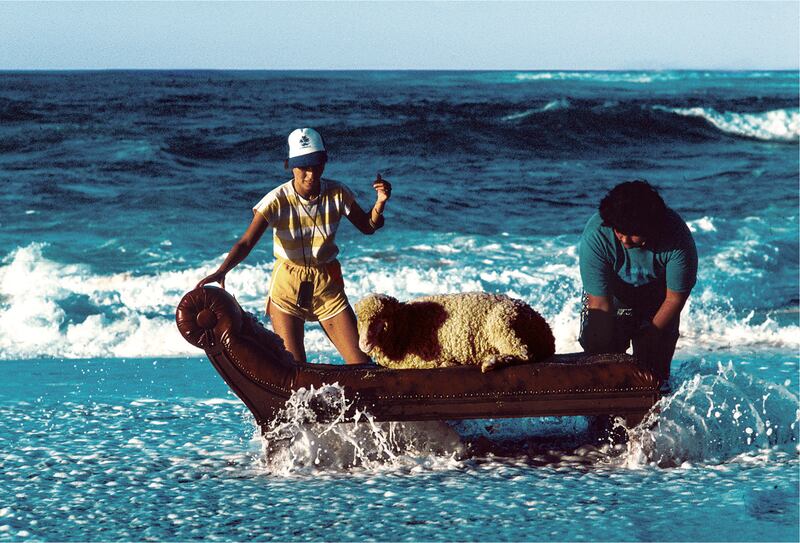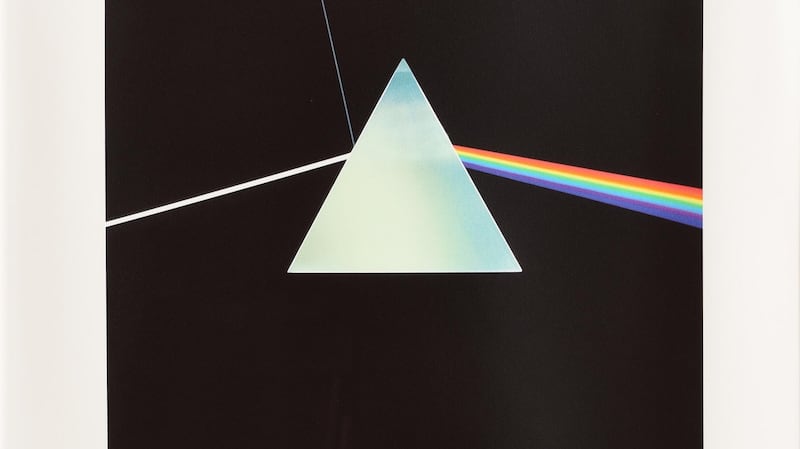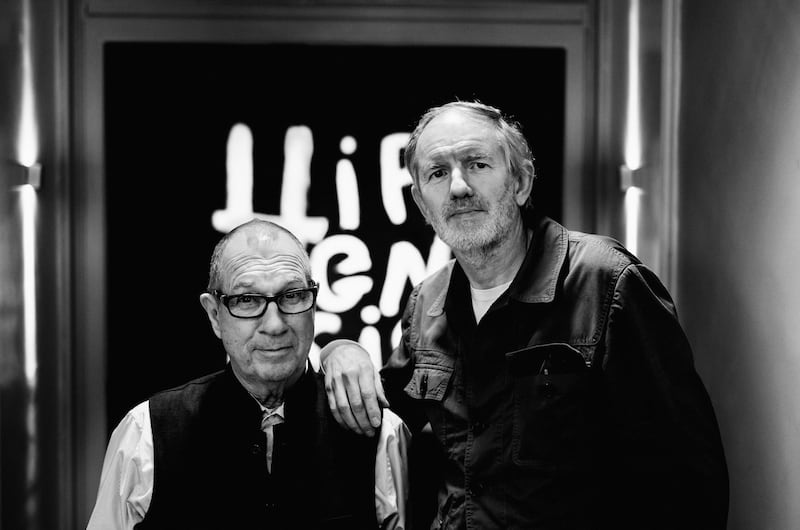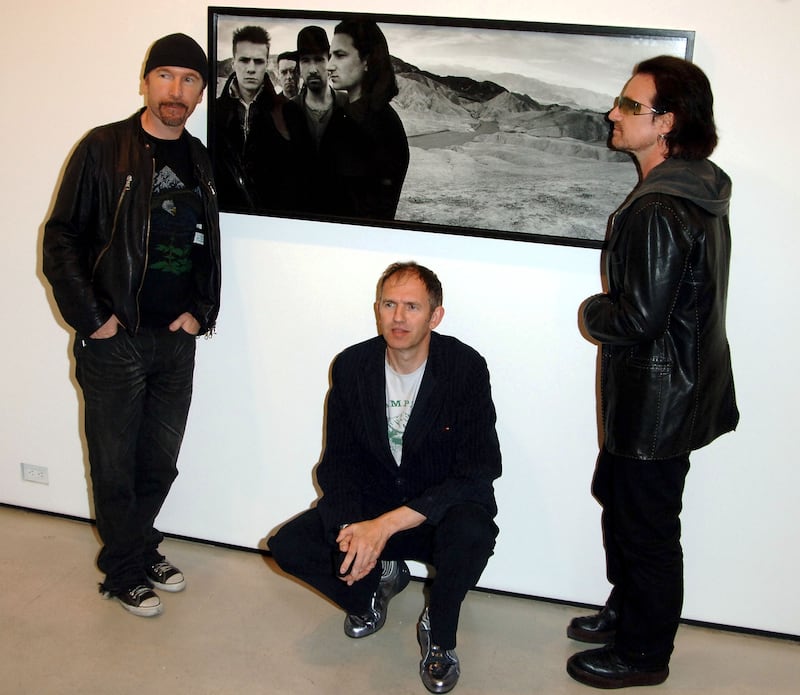The final act of Anton Corbijn’s excellent documentary on Hipgnosis, the design house that produced LP sleeves for the likes of Pink Floyd, Black Sabbath and Led Zeppelin, begins with Glen Matlock, sometime bassist with the Sex Pistols, guiltily admitting that, when he first arrived, that company counted among the enemy. “They did all the covers for what we saw as the dinosaur rock bands,” he says.
Corbijn, the Dutch photographer who documented the British music world from the late 1970s, could be seen – though he wouldn’t put it that way himself – as a fellow traveller with Matlock and his barbarian hordes. His photographs of Joy Division in the music press helped define that band’s austere aesthetic. Later, he became court photographer for our own U2. He was helping sweep the dinosaurs away.
“Yes, I like to think they were pre-punk and we were post-punk,” he says of Hipgnosis.
[ From the Stones to U2 - how Anton Corbijn captured the soul of rock’n’rollOpens in new window ]
For all that, Corbijn’s affection for the men behind the company and for the work they did is evident throughout Squaring the Circle. In the days before music enthusiasts could look stuff up on the internet, “Hipgnosis” was little more than a peculiar half-word. You saw it on the covers of T Rex’s Electric Warrior, Led Zeppelin’s Houses of the Holy and Wishbone Ash’s Argos. You saw it on every Pink Floyd LP. The cow on Atom Heart Mother. The ear on Meddle. The burning man on Wish You Were Here. And, of course, the prism on Dark Side of the Moon. Many were the enhanced cigarettes rolled on those images.


The film explains how Floyd asked the volatile Storm Thorgerson and the more practical Aubrey “Po” Powell, then unknown hairies, to design the cover for A Saucerful of Secrets, the band’s second album, in 1968. Word got around and, by 1970, Hipgnosis (the origins of the name are disputed) was processing an avalanche of high-end commissions from a spectacularly grubby office off the Charing Cross Road. Much of the film details Storm Thorgerson’s well known awkwardness. Never has nominative determinism been in greater evidence. Thorgerson, who died in 2013, was nonetheless greatly loved. Powell’s regret at his temporary estrangement from his old pal is properly moving.
“Some people loved the arguments,” Corbijn says. “Peter Gabriel loved to argue with him because he found it stimulating. And, of course, his ideas were so good. He stopped going on all the shoots to take care of his son. That is quite a decision if you love your work so much.”
The art form of the LP sleeve barely registers any more. Often the most amusing talking head in a music documentary, Noel Gallagher turns up to tell an anecdote about his daughter. It seems the Oasis man mentioned he’d been at a meeting discussing album covers and she had no idea what he was talking about. Gallagher had to point at the little square next to a track on her smartphone. “They have meetings for that?” she said.

How to explain what the album sleeve once meant?
“I’m not sure what you would say,” Corbijn says. “It is difficult to explain without holding an album sleeve you love in your hands. You will never get the importance even with the comeback of vinyl. Yes, people like to hold the album in their hands again, but all the information is now on the internet. You don’t actually need the record sleeve. And, of course, it now has to look good in miniature – so you can see it online. Also spending money on an album meant something when you were younger. Now you just push a button.”
He notes that the Hipgnosis team, whose office didn’t even have a lavatory, were quite “cavalier about comfort”. Watch out clouds. You are about to get yelled at.
“The new generation chooses comfort over quality time after time,” he says. “Whether it’s about records or magazines. You now have magazines on the internet, but I like going through them by hand. But, you know, it’s all about comfort.”
I am trying not to nod. This argument really does make us sound like old fogeys.
“I know, I know,” Corbijn says, laughing.
The album sleeve survived the punk revolution, even if Hipgnosis’s influence declined. Corbijn sets up an interesting juxtaposition between the cover of Dark Side of the Moon from 1973 and that of Joy Division’s Unknown Pleasures from 1979. Twenty years or so ago that comparison might have seemed like a stretch. But Peter Saville’s design for the later album – featuring a data plot of signals from a radio pulsar – is now unavoidable on T-shirts. It does seem every bit as (for once let’s allow that awful cliche) iconic as the light beam refracting through the prism. Saville accepts the argument in Squaring the Circle.
“That was my notion. The outcome was maybe not that dissimilar,” Corbijn says. “I just saw somebody round the corner wearing a T-shirt with ‘Joy Division’ in Japanese above the image. So it really is much like Dark Side of the Moon. There is a simplicity to the graphic. Peter Saville says, as they are both based on scientific data, they don’t date. I don’t know if that’s true. But that is his take.”

You could, however, reasonably argue that, in the 1980s, the pop video became a more important visual correlative to the era’s music than the album sleeve. Ponder Ultravox’s Vienna and you are more likely to conjure up Russell Mulcahy’s promo for the title track than the LP cover by ... well, Peter Saville and Anton Corbijn as it happens. Corbijn became one of the leading forces in the pop video surge, working on memorable films for the likes of Depeche Mode, Echo and the Bunnymen and Art of Noise. And yet. He surely produced nothing so era-defining as his photographs for U2 on the cover of The Joshua Tree.
“With Joshua Tree, I really pushed for having a tree – this tree – in the photograph,” he says. “I liked that tree. I liked the shape of it. Bono had never heard of it. During the shoot, I told him about it. I told him I had this landscape camera. ‘We maybe have the tree on the front and it folds to you on the back.’ That didn’t happen in itself. But then we started looking for a Joshua tree. Steven Averill designed for U2. I just tried to make great pictures and maybe think a little about the cover. It was his design that made it so great. I used that camera for the first time and made all the mistakes that you can, and we got away with it.”
He has remained close to the band and was in Dublin late last year for the recording of their show with David Letterman. How has the relationship changed?
“It’s totally deteriorated,” he says in deadpan Scandinavian. “Ha ha! No, we are still on first-name terms. I saw them last week.”

Corbijn has remained close to the cultural edge over the last 40 years. In 2007, Closer, his film on the life of Ian Curtis, Joy Division’s lead singer, won awards at the Director’s Fortnight at Cannes. The American, an austere thriller with George Clooney; A Most Wanted Man, a John le Carré adaptation with Philip Seymour Hoffman, and Life, a study of James Dean featuring Robert Pattinson, also did well with critics. He admits to the usual struggles with financiers, but a new film is on the way.
“I was happy to be doing something in the Covid period – to make this documentary – but I am also prepping a film to shoot in the autumn. It is a fictional story, but it stars Helen Mirren as Patricia Highsmith.”
That sounds exciting. Any other cast members he can tell us about?
“Ummm ... no!” he says.
It continues to be an interesting career, forged in the same sort of improvised chaos that gave the world Hipgnosis. All that shabby creativity. Quality over comfort. Offices without loos.
“I lived for a year in a brothel in Holland and for half a year in a squat in Dalston,” he says, laughing. “But I always made sure I had a toilet. I never quite went that route.”
There are limits.
Squaring the Circle is in cinemas




















